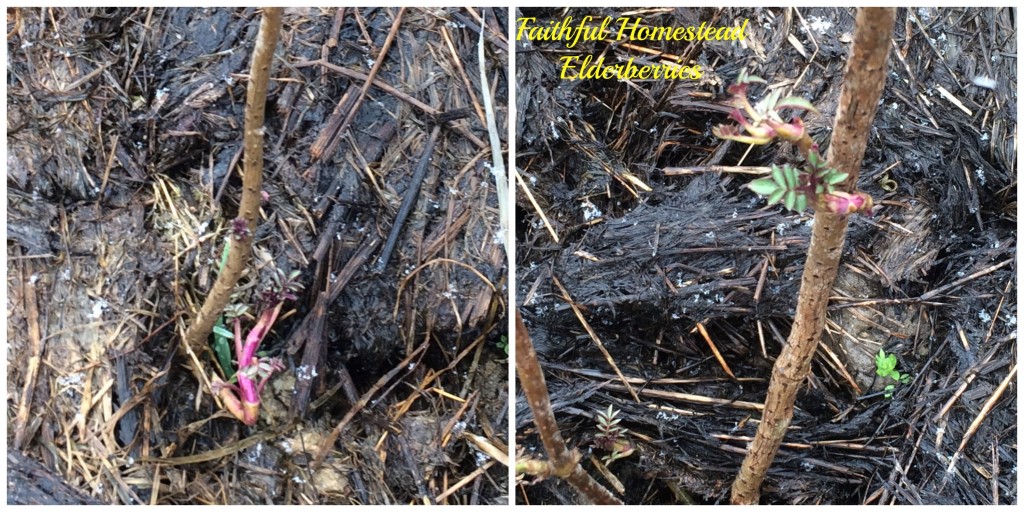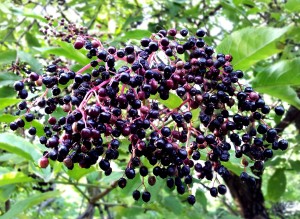I ordered elderberries from the Missouri Department of Conservation as part of my seedling tree order that I placed late last fall. The elderberries, along with the pawpaws and pecans, arrived recently. (Last year I had also ordered some elderberries from MDC and they had grown so much in a year’s time they were too big to try to transplant.) I was able to get the elderberries planted a few days later right before it rained for two days.

The elderberries had started to leaf out, when we received them, so care had to be taken not to break off these tender leaf shoots.
When planting the elderberries (like most other berries and trees) it is important to plant them the same depth that they had been planted previously. It is important to dig the hole deep and wide enough for the tap root to be straight and for all the smaller roots have plenty of room. Ideally, you would want to plant your new plants when it is not overly muddy so that it doesn’t pack around the tender roots. When I planted the elderberries, our soil was plenty damp; however, I decided to go ahead since more rain was on its way and the elderberries had already broken dormancy.
We applied some rotten hay and other compost around each plant since our soil has a high percentage of clay. In drier conditions, it would also be necessary to add water to each hole.
Why Did I Want Elderberries and How Do I Plan to Use Them?
Elderberries are a hardy native plant that is high in Vitamin C and antioxidants. They also contain Vitamins A and B. They are said to help lower cholesterol, improve vision, boost the immune system, and improve heart health. Elderberries are also used to fight coughs, colds, flu, bacterial and viral infections and tonsillitis.
I will use these tiny berries to make tasty, healthy syrup, jelly and jam.
Blessings,
Jennifer


Looking forward to seeing them grow!
Good luck with your Elderberries! And thanks for linking up on the Country Fair Blog Party this month!